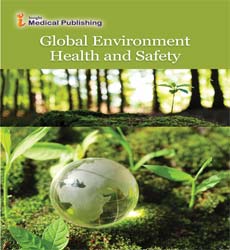Nanotechnology
Syed Abdul Rehman Khan*
Department of school of management,chang an university, Afghanistan
- *Corresponding Author:
- Syed Abdul Rehman Khan
Department of school of management,chang an university, Afghanistan
Tel: 8085460777
E-mail: rehmankhan@yahoo.com
Received Date: July 23, 2021; Accepted Date: October 11, 2021; Published Date: October 21, 2021
Citation: Khan RAS (2021) Nanotechnology Am J Glob Environ Health Saf Vol: 5 No: 1.
Introduction
Nanotechnology deals with the production and use of materials with nanoscale dimensions in different aspects of life. Nanoparticles, thanks to their nanoscale dimensions, have high surface-to-volume ratios and thus very specific properties. Nanotechnology may be a new and expanding technology, its main applications are the event of innovative methods to fabricate new products, to formulate new chemicals and materials, and to substitute the current generation of kit with improved performance equipment, leading to a lower consumption of materials and energy and decreased harm to the environment, also offering environmental remediation. This chapter reviews the applications of nanotechnology in animal, agricultural, nutritional, medicinal, and pharmaceutical sciences, also in catalysis and environmental remediation. The chapter provides descriptions of the foremost current applications of nanotechnology that influence different aspects of human life.
How It Started
The ideas and ideas behind Nano science and nanotechnology started with an interview entitled “There’s many Room at the Bottom” by physicist Feynman at an American Physical Society meeting at the California Institute of Technology (CalTech) on December 29, 1959, long before the term nanotechnology was used. In his talk, Feynman described a process during which scientists would be ready to manipulate and control individual atoms and molecules. Over a decade later, in his explorations of ultraprecision machining, Professor Norio Taniguchi coined the term nanotechnology. It wasn't until 1981, with the event of the scanning tunneling microscope that would "see" individual atoms, that modern nanotechnology began.
Fundamental Concepts in Nano science and Nanotechnology
It’s hard to imagine just how small nanotechnology is. One nanometer may be a billionth of a meter, or 10-9 of a meter. Here are a few illustrative examples:
• There are 25,400,000 nanometers in an inch
• A sheet of newspaper is about 100,000 nanometers thick
• On a comparative scale, if a marble were a nanometer, then one meter would be the size of the Earth
Nanoscience and nanotechnology involve the power to ascertain and to regulate individual atoms and molecules. Everything on Earth is formed from atoms—the food we eat, the garments we wear, the buildings and houses we sleep in, and our own bodies.
But something as small as an atom is impossible to ascertain with the eye. In fact, it’s impossible to ascertain with the microscopes typically utilized in a high school science classes. The microscopes needed to ascertain things at the nanoscale were invented within the early 1980s.
Once scientists had the proper tools, like the scanning tunneling microscope (STM) and therefore the atomic force microscope (AFM), the age of nanotechnology was born.
Although modern nanoscience and nanotechnology are quite new, nanoscale materials were used for hundreds of years. Alternate-sized gold and silver particles created colours within the glass windows of medieval churches many years ago. The artists some time past just didn’t know that the method they wont to create these beautiful works of art actually led to changes within the composition of the materials they were working with.
Today's scientists and engineers are finding a good sort of ways to deliberately make materials at the nanoscale to require advantage of their enhanced properties like higher strength, lighter weight, increased control of sunshine spectrum, and greater chemical reactivity than their larger-scale counterparts.
Open Access Journals
- Aquaculture & Veterinary Science
- Chemistry & Chemical Sciences
- Clinical Sciences
- Engineering
- General Science
- Genetics & Molecular Biology
- Health Care & Nursing
- Immunology & Microbiology
- Materials Science
- Mathematics & Physics
- Medical Sciences
- Neurology & Psychiatry
- Oncology & Cancer Science
- Pharmaceutical Sciences
